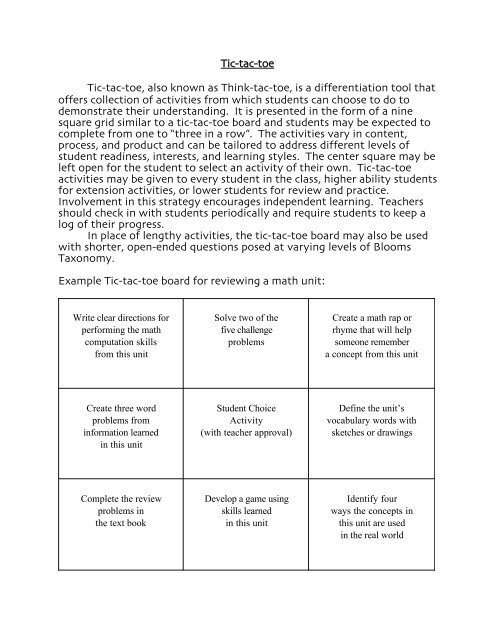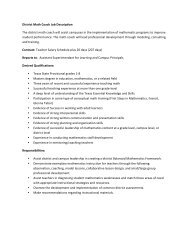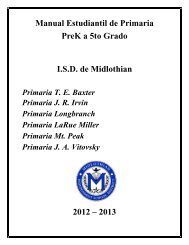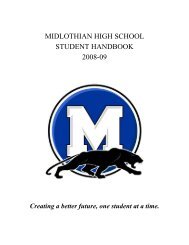Tic-tac-toe Tic-tac-toe - Dare to Differentiate
Tic-tac-toe Tic-tac-toe - Dare to Differentiate
Tic-tac-toe Tic-tac-toe - Dare to Differentiate
You also want an ePaper? Increase the reach of your titles
YUMPU automatically turns print PDFs into web optimized ePapers that Google loves.
<strong>Tic</strong>-<strong>tac</strong>-<strong><strong>to</strong>e</strong><br />
<strong>Tic</strong>-<strong>tac</strong>-<strong><strong>to</strong>e</strong>, also known as Think-<strong>tac</strong>-<strong><strong>to</strong>e</strong>, is a differentiation <strong>to</strong>ol that<br />
offers collection of activities from which students can choose <strong>to</strong> do <strong>to</strong><br />
demonstrate their understanding. It is presented in the form of a nine<br />
square grid similar <strong>to</strong> a tic-<strong>tac</strong>-<strong><strong>to</strong>e</strong> board and students may be expected <strong>to</strong><br />
complete from one <strong>to</strong> “three in a row”. The activities vary in content,<br />
process, and product and can be tailored <strong>to</strong> address different levels of<br />
student readiness, interests, and learning styles. The center square may be<br />
left open for the student <strong>to</strong> select an activity of their own. <strong>Tic</strong>-<strong>tac</strong>-<strong><strong>to</strong>e</strong><br />
activities may be given <strong>to</strong> every student in the class, higher ability students<br />
for extension activities, or lower students for review and practice.<br />
Involvement in this strategy encourages independent learning. Teachers<br />
should check in with students periodically and require students <strong>to</strong> keep a<br />
log of their progress.<br />
In place of lengthy activities, the tic-<strong>tac</strong>-<strong><strong>to</strong>e</strong> board may also be used<br />
with shorter, open-ended questions posed at varying levels of Blooms<br />
Taxonomy.<br />
Example <strong>Tic</strong>-<strong>tac</strong>-<strong><strong>to</strong>e</strong> board for reviewing a math unit:<br />
Write clear directions for<br />
performing the math<br />
computation skills<br />
from this unit<br />
Solve two of the<br />
five challenge<br />
problems<br />
Create a math rap or<br />
rhyme that will help<br />
someone remember<br />
a concept from this unit<br />
Create three word<br />
problems from<br />
information learned<br />
in this unit<br />
Student Choice<br />
Activity<br />
(with teacher approval)<br />
Define the unit’s<br />
vocabulary words with<br />
sketches or drawings<br />
Complete the review<br />
problems in<br />
the text book<br />
Develop a game using<br />
skills learned<br />
in this unit<br />
Identify four<br />
ways the concepts in<br />
this unit are used<br />
in the real world
For additional sample <strong>Tic</strong>-<strong>tac</strong>-<strong><strong>to</strong>e</strong> boards, please see the following<br />
resources, available in the PACE department at Derry Village School.<br />
Coil, C. (2004). Standards-Based Activities and Assessments for the<br />
<strong>Differentiate</strong>d Classroom. Pieces of Learning.<br />
Winebrenner. S. (2001). Teaching Gifted Kids in the Regular<br />
Classroom. Minneapolis, MN: Free Spirit Publishing Inc.<br />
Novel Think-Tac-Toe<br />
Another choice board which is a variation of the <strong>Tic</strong>-<strong>tac</strong>-<strong><strong>to</strong>e</strong> board is<br />
called Novel Think-Tac-Toe developed by Carol Ann Tomlinson. In<br />
addition <strong>to</strong> offering nine choice activities, Novel Think-Tac-Toe is a<br />
differentiation strategy designed for students <strong>to</strong> explore character, setting,<br />
and theme in novels of their choice. Two versions of the grid are used <strong>to</strong><br />
make this a tiered strategy in order <strong>to</strong> address students at different<br />
readiness levels. To view samples of this choice board, please consult the<br />
following book, available in the PACE department at Derry Village School.<br />
Tomlinson, C. (2003). Fulfilling the Promise of the <strong>Differentiate</strong>d<br />
Classroom. Alexandria, VA: Association for Supervision and<br />
Curriculum Development, (ASCD).












![Course Catalog [PDF] - Midlothian ISD](https://img.yumpu.com/36431290/1/190x245/course-catalog-pdf-midlothian-isd.jpg?quality=85)



